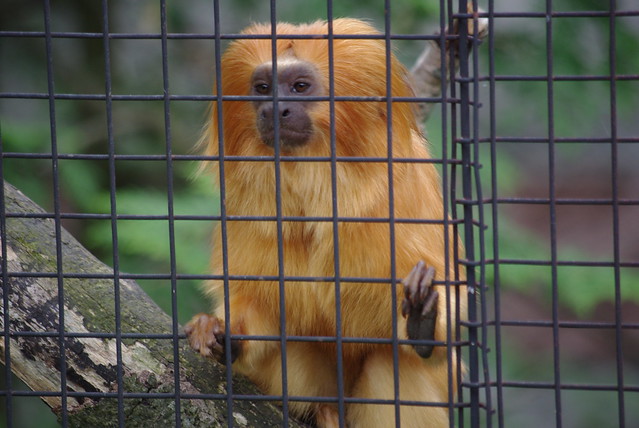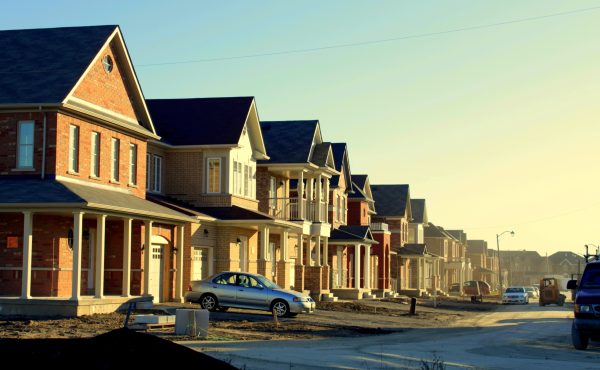

The following is a reprint of my recent Eye Weekly Psychogeography column where I went to the Zoo. Photo by Jacob Earl.
![]()
In August one of the Toronto Zoo’s older gorillas, Samantha, had a stroke and was euthanized at the age of 37. She was one of the original animals present at the zoo’s 1974 opening. The news of her death — and watching friends and folks on the various social networks I follow post remembrances — reminded me of the connection people have with their zoo, and that I had never been to Toronto’s.
The first experience the Toronto Zoo affords is an understanding of how gargantuan the city is. By car or by TTC, it takes a long time to get there (even if you live in the western parts of Scarborough), yet it’s still within the city limits. In an election year, it’s good to head out to the city limits (or the opposite limit, if you live near one already) to see how big the place we keep referring to as a single entity is.
When the zoo was built out here in the corner of what was then Metropolitan Toronto, the edge of Scarborough’s development was still some kilometres west. Though today the cul-de-sacs reach the eastern and southern edges of the zoo property, there is still wild territory to be found outside its periphery, just as there is inside. Wild, that is, for the fifth-biggest municipality in North America: there are still farm fields, barns and the forests of the Rouge Park around here. If you go around on Old Finch Road, there is even a single-lane “bailey bridge” that feels more northern Ontario than Scarborough.
Not having been to a zoo since sometime when Mulroney was prime minister, my expectation going through the turnstiles was similar to the feeling of going to the CNE or an amusement park: thrills and spectacle await. Perhaps to compete, there is an element of that thrill-scape here and there at the zoo. A carousel spins just beyond the front gates and a stingray exhibit promises actual contact with one of the flat fishes, though at a dinner party the other night one guest said that after petting a stingray it took “days” before the sea stink came off her hands. Perhaps that’s the stingray’s revenge for being fondled all day long by strangers.
Once behind some of these initial attractions, the zoo becomes a rather restful and calm place. The paths meander from zone to zone (our zoo, unlike most, is laid out by geographic area rather than by species) and Toronto the city seems far away. The animals are almost stumbled upon at times, with time in between to think and look at the countryside. At times it feels like a southern Ontario meadow, while in other places there are some fairly dramatic elevated walkways that cross some of the deep ravines that make up the Rouge River watershed.
Toronto’s zoo was originally in Cabbagetown, where Riverdale Farm is now. Opened in 1887, this zoo was very much of its time, with animals in small cages, behind bars. You can still see the near-ruins of the cages if you follow the path down to the bottom of the hill. Long-time Cabbagetown residents recall sitting on their back porches and hearing the tigers roar — with anger, presumably, for being stuffed in a little box. Today the tigers and the rest have much more space, though I did see some of the bigger cats doing a lot of rather stern-faced pacing that reminded me of upset house cats I’ve lived with, though perhaps they were a bit more menacing (but not by much).
In the 1960s, a proposal was floated to establish a zoo in and around Don Mills, but a site selection study headed up by architect Raymond Moriyama (of Science Centre and Reference Library fame) chose the current site that had a combination of 125 hectares of tableland and 162 hectares of forest in the Rouge River Valley. A team of architects was brought on board, including Ron Thom (of Massey College and Trent University fame), to design some of the structures.
Built during one of Toronto’s most fantastic eras of bold public design, the zoo’s architecture is understated. Though some of the pavilions have some modish design elements, they follow the contours of the ravines and landscape rather well; the zoo’s architecture seems to acquiesce to the landscape and the animals, and all that meandering from one thing to another is, indeed, calming. Even on a busy weekend day, the animals with less star power could be viewed quietly and, sometimes, alone.
Walking through the parking lot, it was clear I was likely the only person who came to the zoo alone. This is a place for couples on dates and families. There were so many families I felt like a bit of a creep, walking around alone among them, like some guy loitering by the playground (a great downside of the modern age is the default suspicion that the single person carries with them). People-watching at the zoo is as interesting as looking at the animals and, with all those families, the dynamics of domestic life are laid bare.
I expected the trip to be like my Ontario Place experience a few weeks ago, where angry dads yelled at kids and sad-faced mom’s looked exhausted, but in contrast to that dismal showcase of the nuclear family, the zoo seems to make people happy. There were a few moments of distress, like when a mom yelled “I’ll take you back to the van while the rest of the gang eats Beaver Tails,” and complaints of having to walk too much, but mostly I saw smiling faces and sitcom-style get-along-ness. Maybe it’s the animals keeping people happy, like the way they bring dogs and cats into palliative-care wards to cheer people up.
It seemed odd, then, that the food pavilions (which sadly have much in common with the bad-for-you-food of the CNE and Ontario Place) weren’t exclusively vegetarian. The zoo’s commitment to animal welfare ends, it seems, at the deep fryer. Had they served orangutan, elephant and aardvark, the weirdness of keeping some animals safe while biting into others would have disappeared, but that might make kids cry and at Toronto’s happy zoo, only the birds cry.
Follow @shawnmicallef on Twitter.


3 comments
RIP Zoo Monorail… http://transit.toronto.on.ca/spare/0022.shtml
More on the monorail:
http://www.blogto.com/city/2008/11/rediscovering_torontos_monorail/
The food there is pretty disappointing, in that there is such a limited selection. I get that Pizza Pizza probably pays a lot to be there, but I would have killed for some spaghetti and meatballs, or even some chicken alfredo.